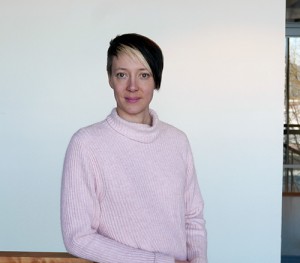Who are you, what do you do and how long have you worked at the Faculty of Veterinary Medicine?
 I am Katariina Thomson, DVM. I am the veterinarian responsible for the operative functions of the Small Animal Hospital at the Veterinary Teaching Hospital and for hospital hygiene at the Veterinary Teaching Hospital. I graduated in spring 2005 and began my doctoral studies in pharmacology and toxicology later that same autumn. I have worked at the Veterinary Teaching Hospital since autumn 2012.
I am Katariina Thomson, DVM. I am the veterinarian responsible for the operative functions of the Small Animal Hospital at the Veterinary Teaching Hospital and for hospital hygiene at the Veterinary Teaching Hospital. I graduated in spring 2005 and began my doctoral studies in pharmacology and toxicology later that same autumn. I have worked at the Veterinary Teaching Hospital since autumn 2012.
What stands out as important in your work in 2015?
At the Veterinary Teaching Hospital, we have successfully taken veterinary treatment hygiene to a whole new level in just a few years. At the Small Animal Hospital, the protocol of hospital hygiene professionals in Finnish specialist medical care is followed in detail. We have also developed our own practices to identify and treat at-risk patients.
I strongly believe in preventive work and emphasise preventive work methods in my teaching. When you identify risks and take the usual precautions in daily work with patients, you can minimise the risk of infection and reduce the work burden. Commendably, staff have adopted preventive work methods, particularly at the Small Animal Hospital. As a result, we have effectively controlled the risk of infection and experience very few treatment-related infections.
The pressure to save money and cut costs as a result of the current Government’s policies raised new challenges for the Small Animal Hospital at the end of 2015. The Veterinary Teaching Hospital has decided to invest in developing its operations rather than just saving money and to meet cost-cutting objectives by maximising efficiency and making more effective use of resources.
What is the best thing about your work?
A diverse job description, great colleagues and a top-level academic work environment all contribute to the positive and challenging work community that helps me thrive from year to year.
What are your plans for 2016?
In terms of hospital hygiene, my aim is to maintain the excellent hygiene levels we have achieved and to reduce and rationalise even more effectively the use of anti-microbial medicines at the Veterinary Teaching Hospital. This will help us shoulder our responsibility for the welfare of both animals and people, as the threat of resistance to anti-microbial medicines increases.
At the Small Animal Hospital, we will improve the internal mobility of patients and staff, and identify operational bottlenecks. Operational streamlining is another important area of development that can improve workplace wellbeing. We will strive to maintain and improve the quality of the veterinary services we provide our patients and the colleagues who refer patients to us. Our goal is to enhance the professional skills of our staff and to invest in the quality of teaching.